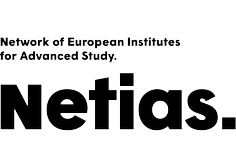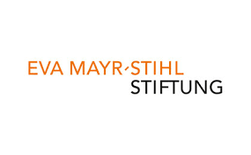2nd Hermann Staudinger Lecture with Nobel Laureate Jean Marie Lehn
Perspectives in Chemistry: "From Molecular to Supramolecular Chemistry towards Adaptive Chemistry"
Nobel Laureate Prof. Jean-Marie Lehn
ISIS, Université Louis Pasteur, Strasbourg and Collège de France, Paris
| When |
Dec 03, 2008
from 05:15 PM to 06:15 PM |
|---|---|
| Contact Name | Dr. Britta Küst |
| Contact Phone | +49(0)761 203-97407 |
| Attendees |
öffentlich / open to the public |
| Add event to calendar |
|
Perspectives in Chemistry: "From Molecular to Supramolecular Chemistry towards Adaptive Chemistry"
The second Hermann Staudinger Lecture was given by Nobel Prize Laureate Professor Jean-Marie Lehn from the Université Louis Pasteur, Strasbourg, and the Collège de France, Paris. Lehn was awarded the Nobel Prize in Chemistry in 1987 together with Donald Cram and Charles Pedersen for their work on molecules with highly selective, structure specific interactions, i.e. molecules that can “recognize” each other and thereby are able to "choose" with which other molecules they will form complexes.
In his lecture, Professor Lehn invited the audience to follow him on his approach to a fundamental question of chemistry: How does matter become complex? - From a single atom via organized molecules to living and thinking matter.
Starting with molecular chemistry, the science of linking atoms through covalent bonds to form molecules, which has not stopped with the synthesis of natural products but has also met the challenge to create even more complex unnatural molecules, he described the chemist’s quest for complexity.
Lehn then moved on to a field that lies beyond molecular chemistry, the supramolecular chemistry. This approach comprises the chemistry of molecular interactions with weak, non-covalent intermolecular bonds generating highly complex chemical systems. The formation of such supramolecular entities requires molecular recognition that is based on “interaction for binding” and “information for selecting” and with this relies on the design of preorganized geometrical and interactional complementary components such as “lock and key”.
The next step towards increased complexity would be the designing of self-organizing chemical systems, i.e. programmed systems that undergo spontaneous organization by self-assembly of their constituents. This is due to the information “stored” in the molecular components and a “recognition algorithm” defined by the interaction pattern. To illustrate this Lehn focused on the programmed self-organization of metallosupramolecular structures such as grids or cylinders which is a powerful alternative or complement to nanofabrication and nanomanipulation. In such systems metal ions act as “cement” and process the molecular information in the ligand molecules, the “bricks”, through a coordination algorithm so that defined supramolecular architectures are spontaneously formed. “Make the bricks, make them correctly and let them (work),” as Lehn explained. Supramolecular chemistry means dealing with dynamic systems since the non-covalent interactions are labile and reversible and allow constitutional variation through exchange of the molecular components. The same holds true for molecular chemistry after the import of dynamics through reversible covalent bonds. Therewith introduction of diversity and dynamics into the self-organization process leads to a constitutional dynamic chemistry and to the development of molecular and supramolecular constitutional dynamic materials such as dynamers. These are polymeric materials exhibiting reversible exchange of their constituents and corresponding changes in optical and mechanical properties.
Lehn finally presented a few examples for dynamers that are able to respond to the force of external stimuli through constitutional variation. Such novel, self-adjusting systems open new perspectives towards an adaptive, evolutive chemistry.
In his very vivid lecture in the crowded assembly hall of the University, Professor Lehn did not only enthuse many chemistry students but also a broader audience of FRIAS fellows and other scientists, as well as people from the public. Additionally, correspondents from the local newspaper and television reflected the broad interest this event evoked. Afterwards, the scientific discussion was continued in the Prometheus Hall while enjoying a glass of wine.
It is to be hoped that this lecture is the beginning of a continuing collaboration between Professor Lehn, the FRIAS and the University of Freiburg.





